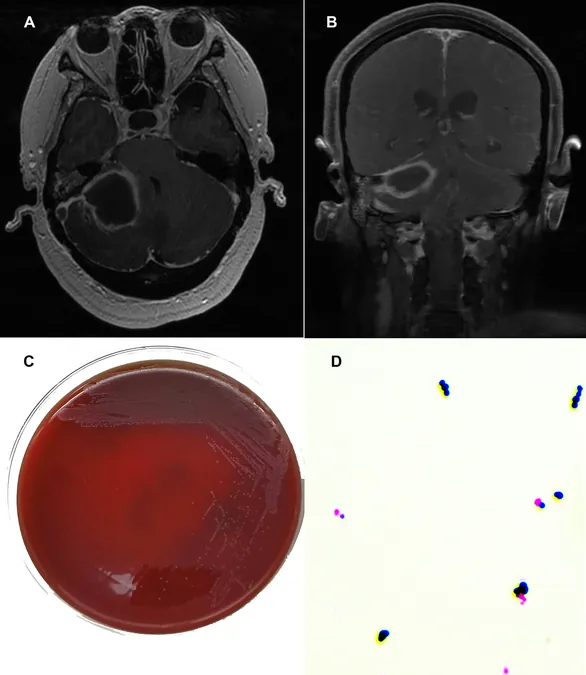
Unraveling the Role of Dietary Minerals in Diabetes Management: Insights from the Tehran Lipid and Glucose Study
2025-04-05
Author: Siti
The Study Population and Methodology
The TLGS identified a baseline of 1,640 adults aged 21 and older at risk of pre-diabetes from examinations conducted between 2006-2011. After accounting for various exclusion criteria, such as normal glycemia and missing data, the final analytic group comprised 1,586 participants followed for a median of 5.8 years. This large sample size provides a robust platform for understanding the effects of dietary habits on glycemic status.
Dietary Assessment Approach
Participants' dietary intake was meticulously evaluated using a semi-quantitative food frequency questionnaire (FFQ) across two examinations. This validated tool captured long-term dietary behaviors and allowed researchers to analyze mineral consumption effectively over time. Crucially, it laid the groundwork for identifying specific dietary patterns linked to changes in glycemic status.
Findings: The Power of Minerals
Significantly, the study revealed that certain dietary mineral patterns, particularly chromium-selenium (Cr-Se) and iron-manganese (Fe-Mn), are associated with improved glycemic outcomes. Participants following these mineral patterns were 26% and 42% more likely, respectively, to return to normal glycemic levels. Additionally, the Fe-Mn pattern corresponded with a 33% reduction in the risk of developing type 2 diabetes (T2D) after adjusting for various confounding factors.
Exploring the Mechanisms Behind the Results
The beneficial effects of these minerals operate through various mechanisms. Manganese, for instance, enhances insulin sensitivity and may mitigate oxidative stress through its role in superoxide dismutase (SOD) enzymes, crucial for cellular protection against oxidative damage. Conversely, the relationship with iron intake appears complex. While heme iron (found in meat) is linked to increased T2D risk, non-heme iron (predominantly sourced from plants) might provide protective benefits.
The Importance of Chromium and Selenium
Chromium emerges as an essential trace element in this study, showing promise in enhancing glucose metabolism. The research emphasized the prevalence of chromium deficiency among individuals with pre-diabetes, suggesting the need for dietary strategies to increase chromium intake in at-risk populations. Similarly, selenium, while often seen as a potential risk factor for T2D when levels are elevated, may provide protective benefits when consumed in adequate amounts through food.
Recommendations for Dietary Interventions
The compelling findings of the TLGS prompt actionable dietary recommendations. Adults, particularly those at risk of pre-diabetes, should focus on increasing their intake of leafy greens, whole grains, legumes, and nuts. These foods are rich in the essential minerals identified in the study and may enhance insulin sensitivity, thereby reducing the likelihood of diabetes progression.
Conclusion: Charting a Path Forward
This pioneering study underscores the critical role dietary minerals can play in managing pre-diabetes and preventing T2D. Future research must seek to extend these findings, incorporating long-term mineral intake assessments alongside metabolic health evaluations. Ultimately, fostering a diet rich in specific minerals may pave the way for innovative interventions in diabetes management.
In an age where dietary patterns significantly impact health outcomes, understanding the relationship between nutrition and disease is more vital than ever. The TLGS provides a roadmap, urging a reassessment of how dietary minerals could be leveraged for better health in populations vulnerable to diabetes.




 Brasil (PT)
Brasil (PT)
 Canada (EN)
Canada (EN)
 Chile (ES)
Chile (ES)
 Česko (CS)
Česko (CS)
 대한민국 (KO)
대한민국 (KO)
 España (ES)
España (ES)
 France (FR)
France (FR)
 Hong Kong (EN)
Hong Kong (EN)
 Italia (IT)
Italia (IT)
 日本 (JA)
日本 (JA)
 Magyarország (HU)
Magyarország (HU)
 Norge (NO)
Norge (NO)
 Polska (PL)
Polska (PL)
 Schweiz (DE)
Schweiz (DE)
 Singapore (EN)
Singapore (EN)
 Sverige (SV)
Sverige (SV)
 Suomi (FI)
Suomi (FI)
 Türkiye (TR)
Türkiye (TR)
 الإمارات العربية المتحدة (AR)
الإمارات العربية المتحدة (AR)